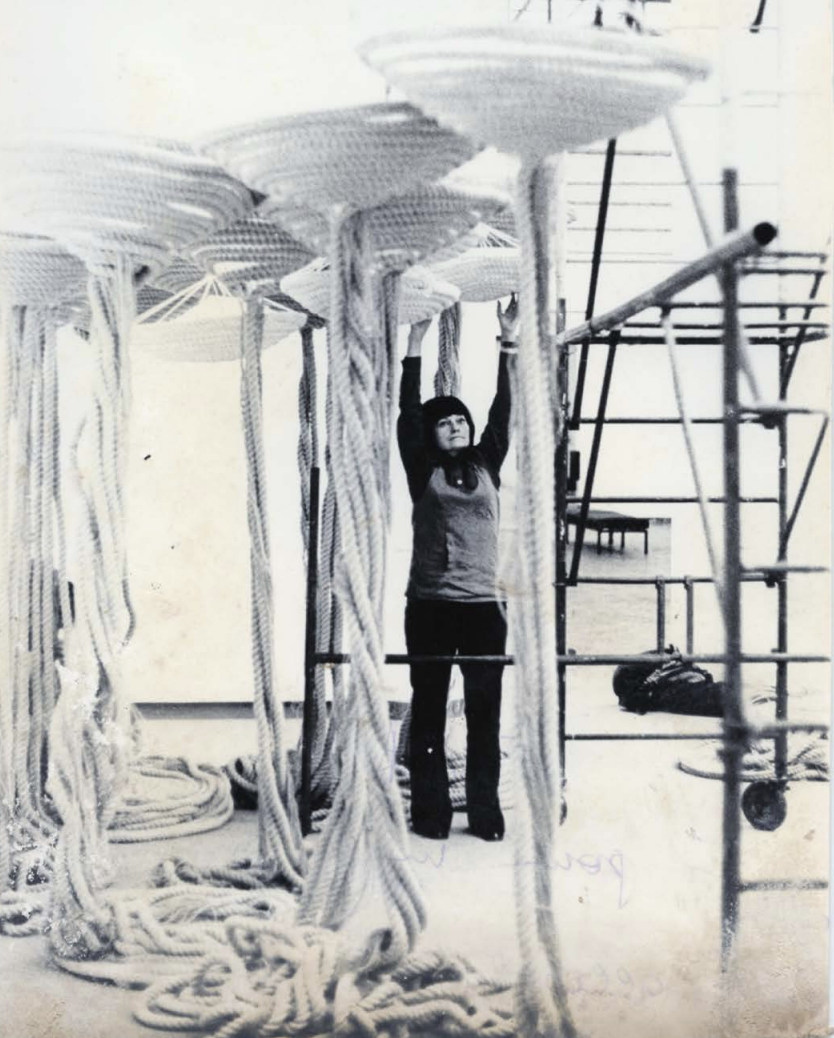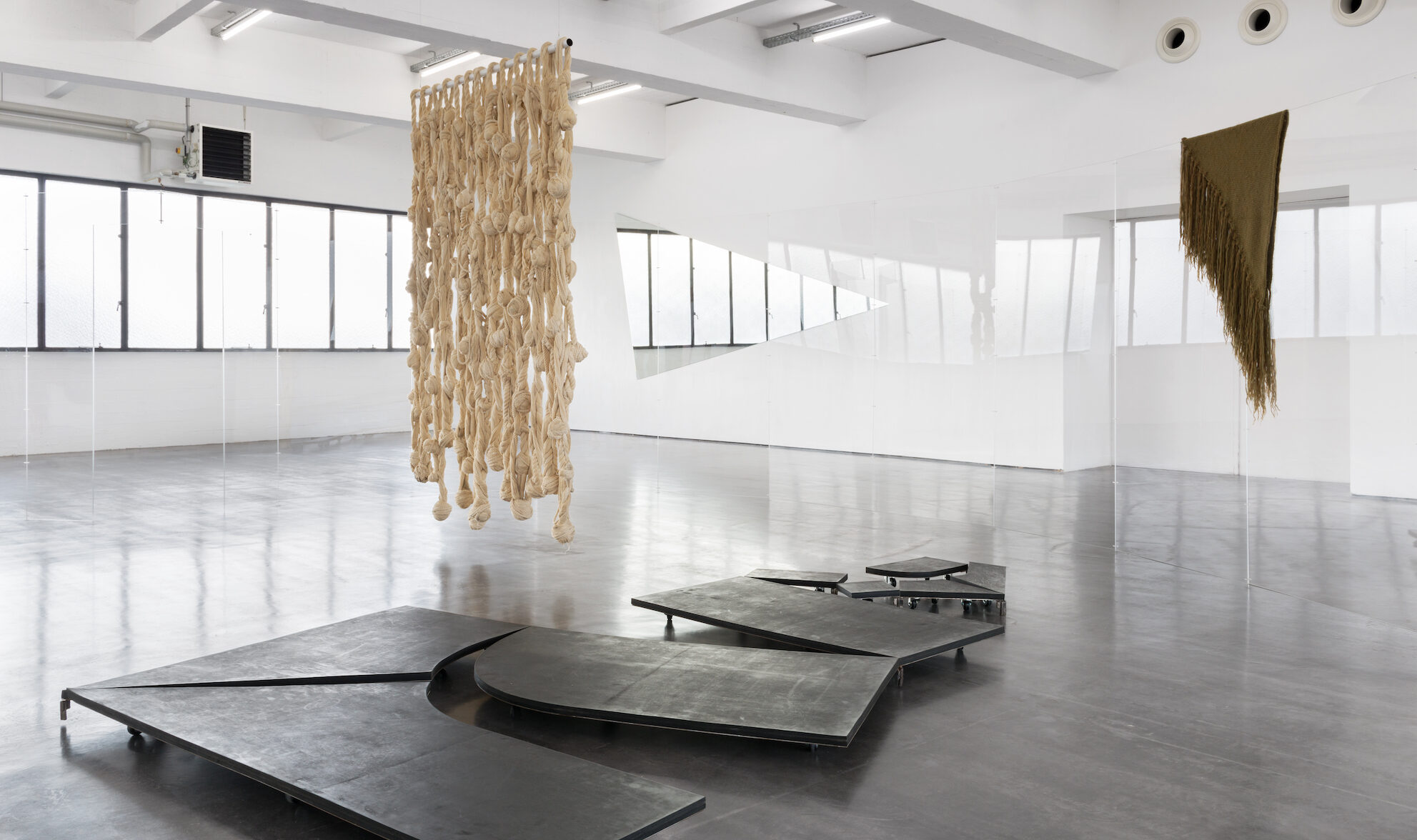Tapta
Born Maria Wierusz-Kowalski in 1926 in Poland, Tapta moved to Belgium as a political refugee after taking part in the Warsaw Uprising of 1944.
After graduating from the National Institute for Architecture and Visual Arts in La Cambre, Brussels, Tapta established herself as one of the most important members of a new generation of artists, who sought to redefine sculpture by using textiles and other flexible materials. Calling her work « sculpture souple » (soft sculpture) and establishing textiles as more than working materials, she greatly contributed in turning what was previously considered as craft into High Art.
Tapta’s innovative experimentation is most evident in her public artwork -also called neoprene works, after the material- which she began to make in the late 1970s ans which a marked a radical turn in her use of materials.
Tapta had her first solo show in 1966 at the Galerie Les Métiers in Brussels. In 1975, Tapta started teaching tapestry at La Cambre. Amongst her students were Ann Veronica Janssens, Monica Droste and Marie-Jo Lafontaine. Tapta died in 1997.

